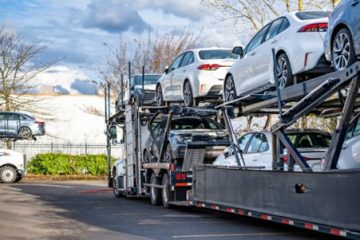Understanding Car Importation
Car importation refers to the process of bringing vehicles from one country to another. This can encompass a variety of factors, including the type of vehicle, its age, and the regulations imposed by the destination country. Importing a car can be an attractive option for many consumers who seek specific models or wish to purchase vehicles at lower prices than those available locally. However, the process can be complex and is governed by various laws and regulations that vary significantly from one country to another.
When considering importing a car, it’s essential to understand the key factors involved. First and foremost, prospective importers should familiarize themselves with the import duties and taxes that will apply. These can include customs duties, excise taxes, and value-added taxes, all of which can substantially increase the overall cost of the vehicle. Additionally, specific regulations may dictate the types of vehicles allowed for import, particularly concerning emissions standards and safety regulations.
Researching Regulations and Compliance
Before initiating the import process, thorough research into the regulations and compliance requirements of the destination country is crucial. Each country has its own set of rules governing vehicle imports, which can include safety standards, emissions regulations, and eligibility for registration. For example, some countries may prohibit the import of certain vehicle types, such as those not meeting specific emission standards, while others may impose age limits on imported vehicles.
In the United States, the Environmental Protection Agency (EPA) and the Department of Transportation (DOT) set strict regulations on imported vehicles. Cars must meet federal emissions and safety standards to be registered for use. Similarly, the European Union has its own set of standards that vehicles must adhere to before being allowed on the road. Importers must ensure that their vehicles meet these requirements or face the possibility of costly modifications or rejection of their import request.
Choosing the Right Vehicle for Import
Selecting the right vehicle for import is a critical step in the process. Factors such as make, model, year, and condition of the vehicle can significantly influence the importation experience and costs. Popular choices for importation often include classic cars, luxury models not available in the local market, or vehicles that offer better performance or features than domestic options.
Potential importers should also consider the availability of parts and service for the vehicle they wish to import. Cars that are less common or are not supported by local dealerships may pose challenges for maintenance and repairs. Additionally, researching the vehicle’s history and ensuring it has not been involved in major accidents or suffered from extensive wear and tear can help avoid future issues and expenses.
It’s advisable to engage with trusted dealers or private sellers, as well as consulting forums and reviews to gauge the reliability and reputation of sellers. This can provide insights into the quality of vehicles being imported and assist in making an informed decision.
The Import Process: Step-by-Step
Once a vehicle has been selected for import, understanding the steps involved in the import process is crucial. The process generally involves several key stages:
- Purchase and Documentation: After selecting the vehicle, the buyer must complete the purchase and gather necessary documentation. This typically includes the vehicle’s title, bill of sale, and any existing registration documents. Accurate documentation is vital, as it will be required during the import process.
- Shipping Arrangements: The next step involves arranging for the vehicle to be shipped. This can be done through a shipping company specializing in vehicle transport. Importers should choose between container shipping, which offers more protection, and roll-on/roll-off (RoRo) shipping, which is generally more economical but less secure.
- Customs Clearance: Upon arrival in the destination country, the vehicle will need to clear customs. This involves submitting the required documentation and paying any applicable import duties and taxes. Failure to comply with customs regulations can result in delays, fines, or even the confiscation of the vehicle.
- Vehicle Inspection: Many countries require imported vehicles to undergo inspections to ensure compliance with safety and emissions regulations. Importers should be prepared for potential modifications or repairs needed to meet these standards.
- Registration and Licensing: Finally, once all the above steps are completed, the vehicle can be registered and licensed for use on local roads. This process may vary by jurisdiction and often requires additional fees and documentation.
Costs and Considerations of Importing a Car
Understanding the costs associated with importing a import voiture usa is essential for effective budgeting. Beyond the initial purchase price of the vehicle, several other expenses can arise throughout the importation process. These costs can include shipping fees, customs duties, taxes, inspection fees, and potential modification costs to meet local regulations.
Additionally, it is essential to consider ongoing costs associated with vehicle ownership, such as insurance, maintenance, and fuel. Importing a vehicle can sometimes lead to higher insurance premiums, especially for rare or luxury models. Therefore, researching insurance options and comparing quotes from different providers can help mitigate these costs.
Moreover, potential importers should be aware of the risks involved in purchasing vehicles from overseas. These can include issues with the vehicle’s condition, hidden fees, or complications with the import process. Engaging with a reliable and experienced importer can help navigate these challenges and ensure a smoother experience.
By thoroughly researching and understanding the entire car importation process, potential buyers can make informed decisions and successfully bring their desired vehicles to their home country.




